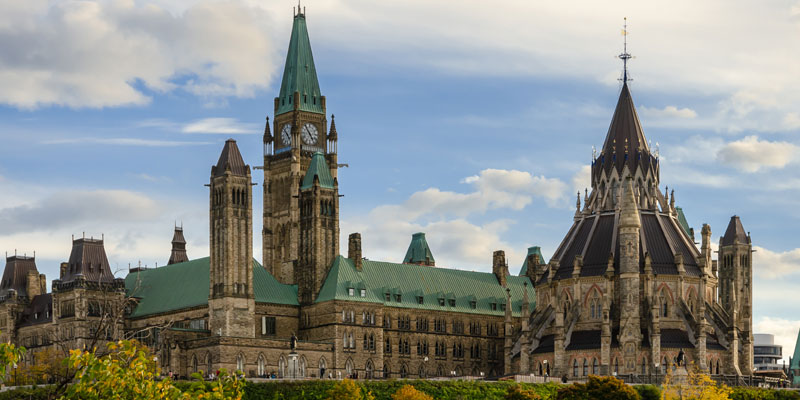Federal debt may eclipse $1 trillion for first time in Canadian history

The fiscal response to the COVID-19 crisis has been large at the federal and provincial levels. The reduction in economic activity and subsequent reduced government revenues has produced massive deficits. At the provincial level, provincial government deficits will surge more than an estimated six-fold this year, rising to a combined total of $63 billion. Federally, the PBO estimated that the federal deficit for 2020-21 will come in at $252 billion.
Of course, once these deficits are all said and done, debt levels will also go up with the federal debt possibly eclipsing $1 trillion for the first time. Even more importantly, according to forecasts, Canadian economic growth for 2020 will shrink by more than 12 per cent, exacerbating the debt’s relationship to the size of the economy.
As such, it’s worth simulating where the federal debt-to-GDP ratio may go next. The figure below includes five scenarios for the ratio. Scenario I was laid out in the Trudeau government’s Federal Fall 2019 Economic and Fiscal Update.
In the pre-COVID world, Canada was expected to see its federal debt rise from $685.5 billion in 2018-19 to $741.1 billion in 2020-21 and then reach $781.8 billion by 2022-23. Without the current crisis, and with assumptions of reasonable economic growth, the federal government was still running substantial deficits and adding to the debt. However, with economic growth, the debt-to-GDP ratio was expected to remain stable over this period at just over 30 per cent.
What comes next is really a function of how much spending goes up, how much revenues decline, and how the overall economy performs. For the purposes of illustration, Scenarios II to V combine several economic growth and deficit scenarios. There are two growth assumptions used—a flat economic performance after the decline (termed an L) and a more robust recovery after the decline (termed a V).
If the economy’s performance is an L, the assumption is a 12 per cent decline in GDP in 2020-21 and zero growth for subsequent two years. If the economy’s performance is a V, then the assumption is a 12 per cent drop in 2020-21, followed by full recovery to the GDP level in 2021-22 plus 2 per cent growth and then 2 per cent growth the year afterwards. As for the deficit scenarios, the worse case scenario is continuous deficits each year at the Parliamentary Budget Officer 2020-21 estimate of $252 billion. The better case scenario is a 50 per cent “declining balance” deficit of $126 billion in 2021-22 and $63 billion in 2022-23.
The results of this simple simulation are sobering. Scenario I is the world as it could have been, but remains a valuable reference point. Scenario II, which combines zero economic growth after this year’s GDP drop with annual $252 billion deficits, will by 2022-23 bring the federal debt level up to $1.5 trillion and a federal debt-to-GDP ratio of 73 per cent.
Put another way, within three years we would be back to where we were in the early-1990s with a debt-to-GDP ratio equivalent to the federal fiscal crisis. The main difference would be getting to the past crisis level of federal government finance in three years rather than over two decades like last time.
Scenario III assumes a robust V economic rebound, with large deficits maintained at 2020-21 levels and the federal debt-to-GDP ratio hit 61 per cent. Scenario IV assumes a federal debt of $1.2 trillion and L economic stagnation, with the ratio reaching 57 per cent. Finally, Scenario V (of better case deficits and robust economic rebound) would still see a $1.2 trillion federal debt but a 48 per cent debt-to-GDP ratio.
Because fiscal and economic factors remain fluid, these number are simulations not forecasts. But they do show how much better or worse the federal fiscal situation might get. Hopefully, our economic performance will improve more than expected, though that’s a function of the pandemic’s progress. One thing is certain; both the federal debt and debt-to-GDP ratio will grow over the next three years. The only real uncertainty is by how much. That will be decided partly by economic circumstances and partly by how the federal government deals with the those circumstances and federal finances.

